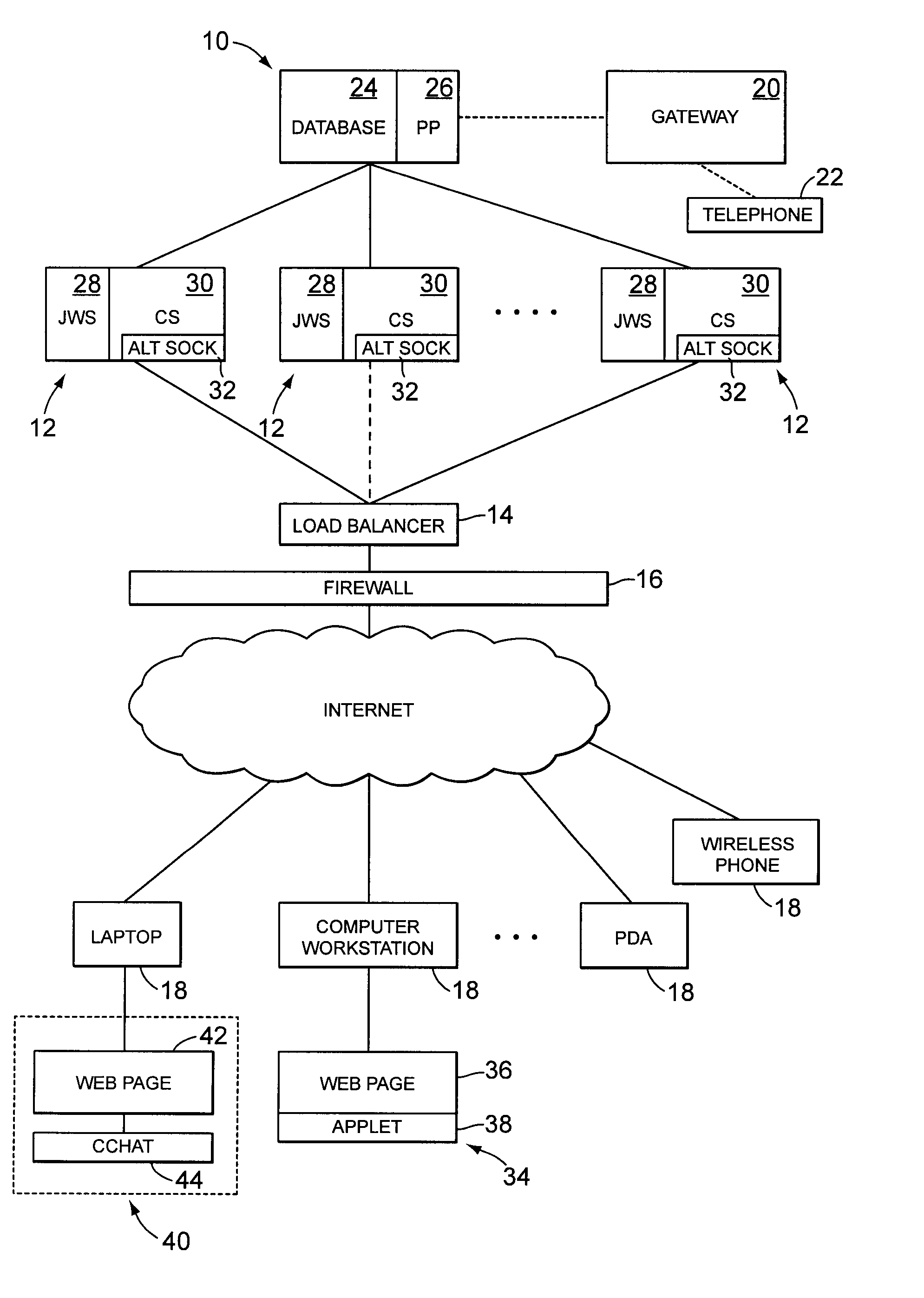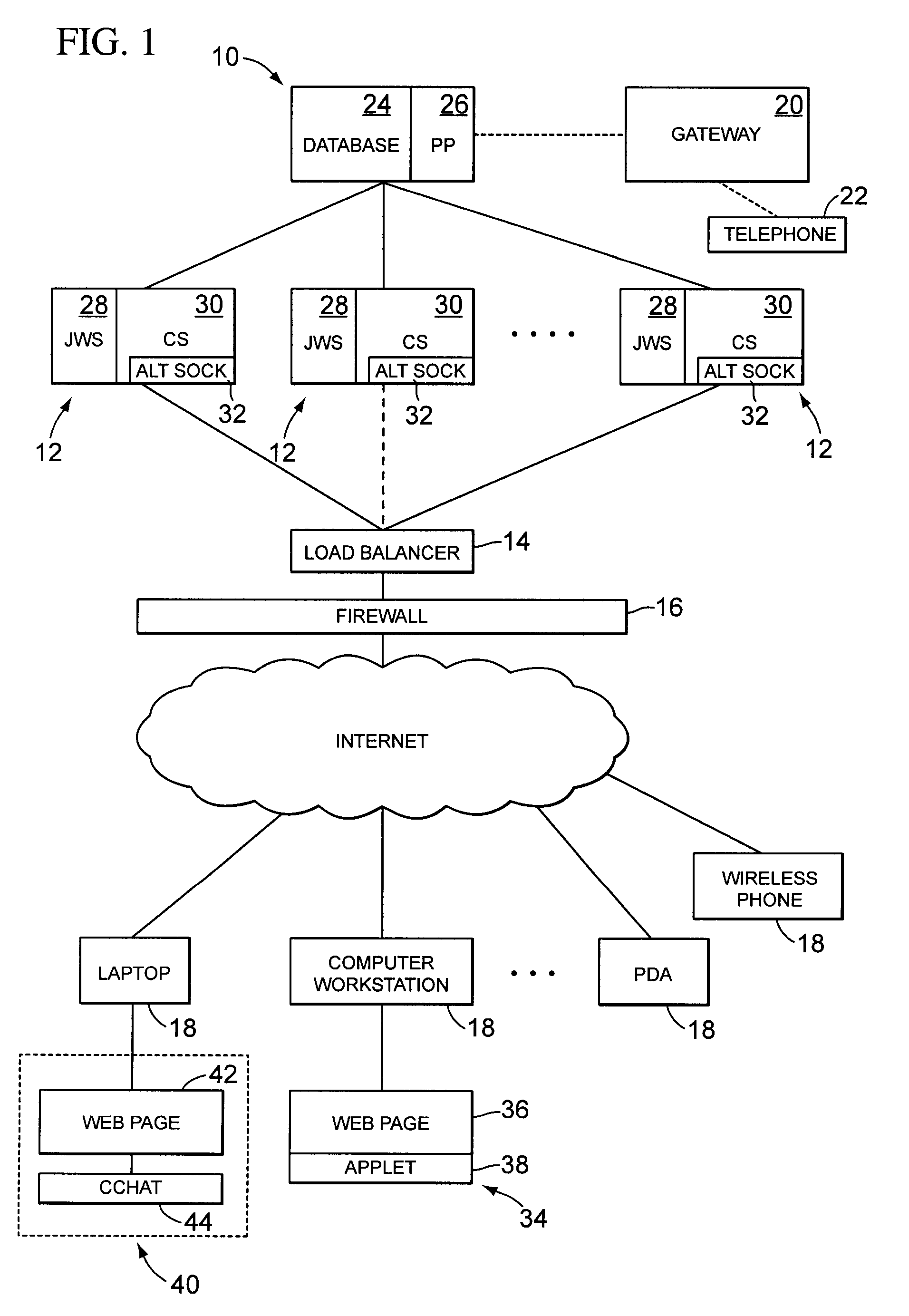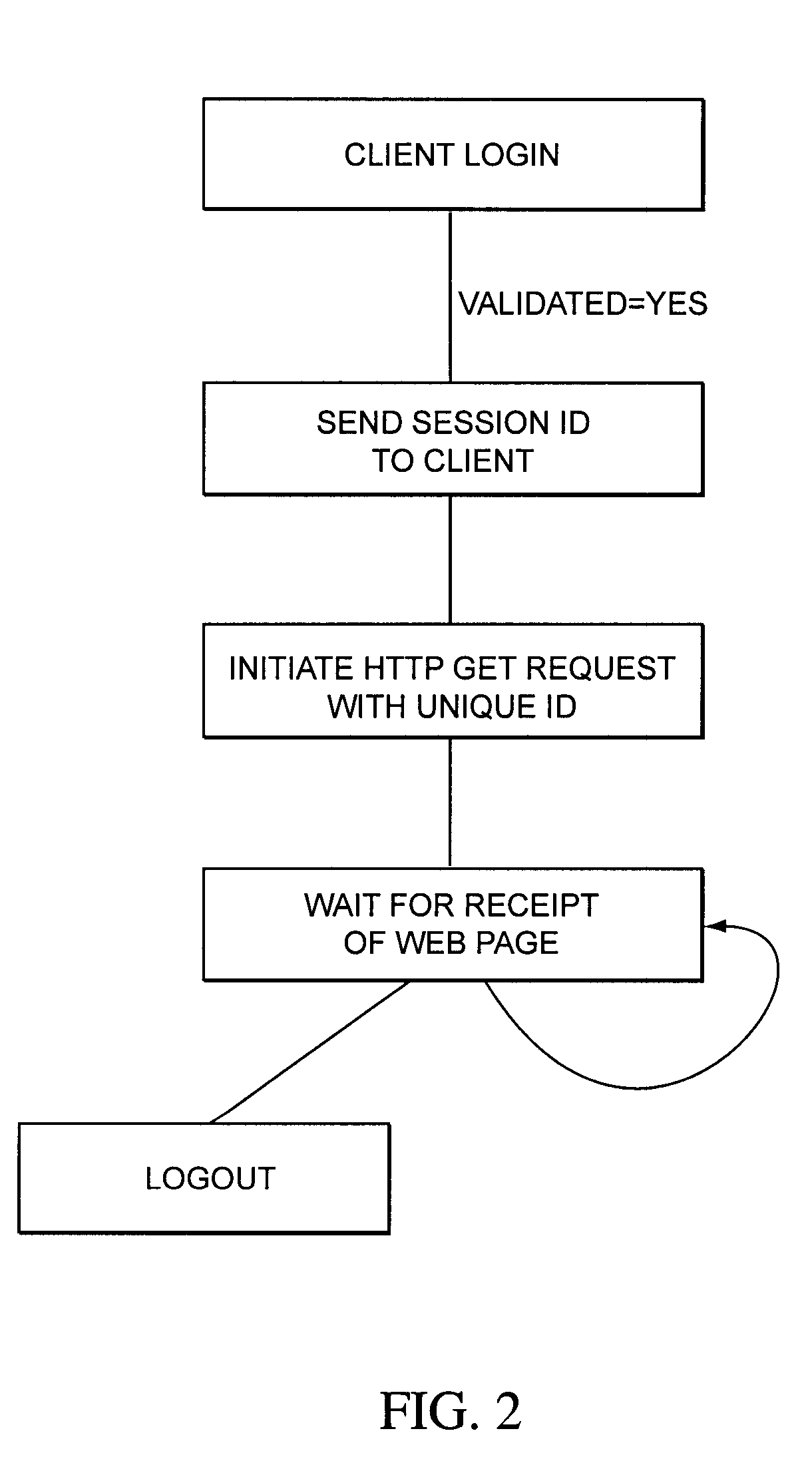System using HTTP protocol for maintaining and updating on-line presence information of new user in user table and group table
a technology of user table and group table, which is applied in the field of system and method for maintaining presence and communicating over a computer network using the http protocol, can solve the problems of inability to scale, inability to provide any static, and inability to provide unique identifiers, and users do not know their own dynamically assigned internet address
- Summary
- Abstract
- Description
- Claims
- Application Information
AI Technical Summary
Benefits of technology
Problems solved by technology
Method used
Image
Examples
Embodiment Construction
[0045]Certain terminology is used herein for convenience only and is not to be taken as a limitation on the present invention. In the drawings, the same reference numerals are employed for designating the same elements throughout the several figures.
[0046]The present invention is described in the context of a communications system used to facilitate communication with entities over a computer network such as the Internet or an Intranet. The term “entity” is used herein to mean any type of device with any type of an IP connection (e.g., wired, wireless, etc.) to a network. For example, an entity could be an Internet enabled personal computer (PC), laptop, workstation or other type of computer. An entity could also be an Internet enabled wireless telephone, personal digital assistant (PDA) such as a Palm Pilot, or even an appliance or other household device.
[0047]Turning to FIG. 1, a high-level architecture block diagram configuration for one preferred embodiment of the communications...
PUM
 Login to View More
Login to View More Abstract
Description
Claims
Application Information
 Login to View More
Login to View More - R&D
- Intellectual Property
- Life Sciences
- Materials
- Tech Scout
- Unparalleled Data Quality
- Higher Quality Content
- 60% Fewer Hallucinations
Browse by: Latest US Patents, China's latest patents, Technical Efficacy Thesaurus, Application Domain, Technology Topic, Popular Technical Reports.
© 2025 PatSnap. All rights reserved.Legal|Privacy policy|Modern Slavery Act Transparency Statement|Sitemap|About US| Contact US: help@patsnap.com



